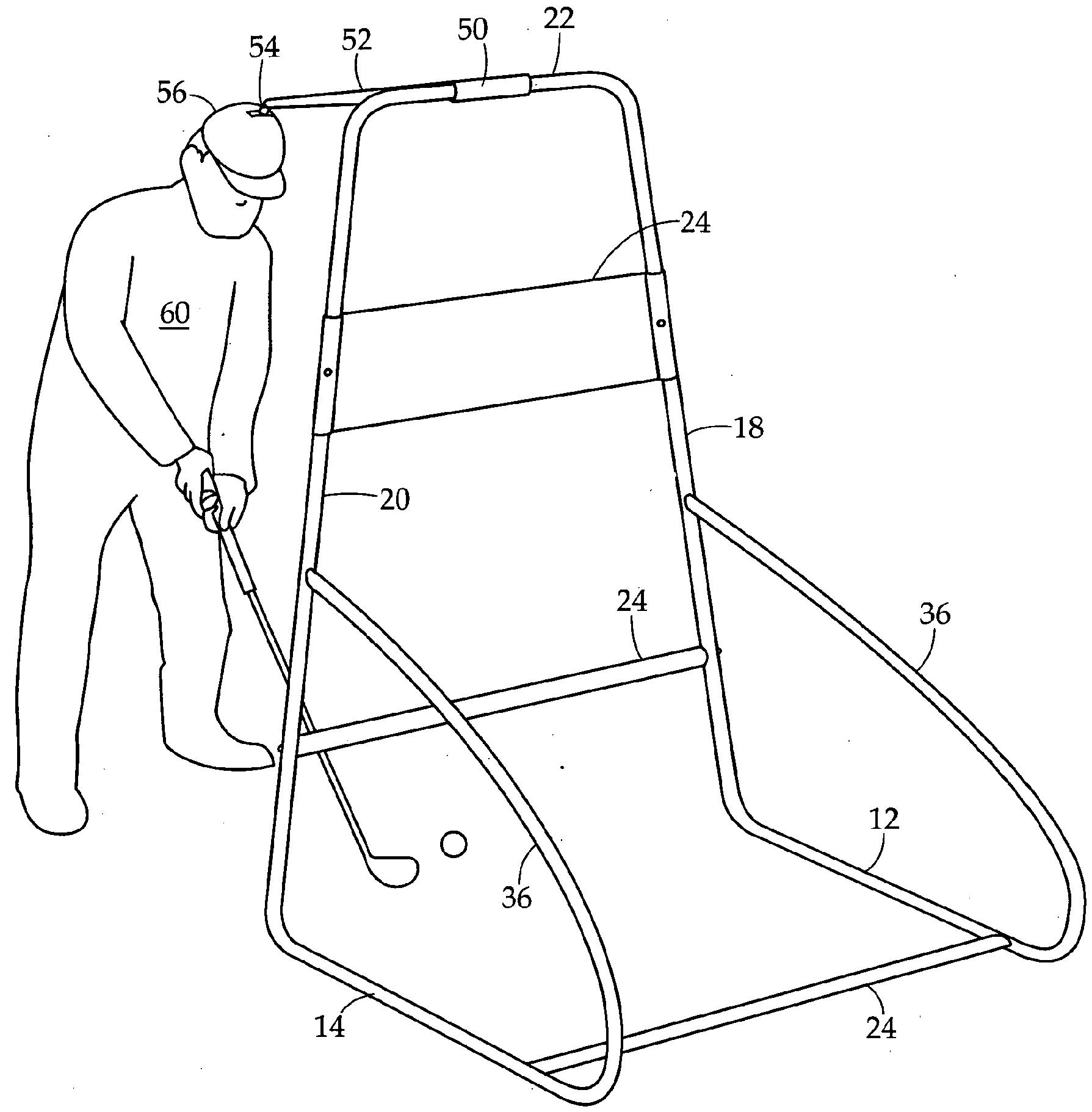Sir Charles, This Invention is for You!
Have you been watching The Haney Project: Charles Barkley show on TGC? If so, you have probably seen Charles hit some decent shots when Hank is standing over him holding his head; and you have probably also seen Charles hit some less than perfect shots as soon as Hank steps away.
Last week a patent application published that made me immediately think of poor Charles. The invention disclosed in US Pub. No. 20090105006 titled “Training Apparatus for Improving a Golf Swing” seems to be made for him. Check it out!
The patent application explains:
[0005] A myriad of factors come into play in order to permit a golfer to strike a golf ball and achieve the desired trajectory and shot result. One of the most important factors in achieving a well struck golf shot is the positioning and movement of the head of a golfer. The head provides the center of balance for the body and the axis about which the body pivots to generate the desired club head speed and it is therefore important that a golfer keep his head in a relatively stationary, fixed positioned during the swing in order to properly strike the ball and achieve the intended trajectory or flight path. The position of the golfer’s head is also influenced by a number of independent factors which affect its orientation. These include but are not limited to: 1) the evenness or unevenness of the surface upon which the golfer is standing affects the positioning of the head relative to the golf ball and the swing, 2) as does the stance of the golfer, 3) the angle between the golfer’s calf and thigh, 4) the angle or slope of the spine at address, and 5) the hip and shoulder movement during the backswing, downswing, and follow through.
[0006] When practicing, the golfer may believe that he is maintaining his head in a stationary, fixed position during the golf swing, or the golfer may rely upon an observer to provide verbal feedback as to the motion of the golfer’s head during the golf swing. However, neither of these two practice methods provides any direct tactile feedback to the golfer regarding the motion of his head during the swing. The head may remain fixed in a horizontal plane, but move laterally or vertically. U.S. Pat. 7,204,766 to Rose attempted to address this problem, but does not provide the feedback required. One notable golf instructor provided tactile feedback to his students by holding on to their head as they execute the golf swing. Applicant’s apparatus achieves the tactile feedback required without the need or presence of an instructor or an assistant. There therefore has been a need for a training device which provides this tactile sensation and feedback to the golfer regarding the motion of his head during the golf swing.
[0010] In the basic embodiment, the golf training device is a support rod, a first end of which is secured to a hinged mechanism, the hinged mechanism being secured to a support, the opposing end of the support rod having secured thereto a head piece or helmet which is engageable with the upper portion of the head or skull of an individual, the support rod extending a sufficient distance from its support and hinge mechanism to allow an individual to execute a golf swing while the head piece is positioned on the golfer’s head. In the preferred embodiment the golf training device for teaching a golfer to maintain the head in a stationary position during all aspects of the golf swing, the golf training device having a frame, the frame having two legs, each leg having a horizontal portion for contact with a support surface and an upright portion forming an acute angle with the horizontal portion, the two upright legs joined by an upper horizontal cross bar at their upper terminus, and intermediate support cross member positioned midway between the horizontal legs and upper horizontal cross bar, the upper horizontal cross bar having positioned thereon a selectively rotatable T-joint, the outwardly extending leg of the T-joint secured to a head piece support arm extended outwardly from the upper horizontal cross bar, and having secured to the end thereof, a head piece for selective engagement with the upper portion of the head or skull of the individual when swinging a golf club.
Now if only they could throw a set of wheels on it so Charles could attach it to a cart and pull it around the course.
Dave Dawsey – Tracking Golf Teaching Inventions
PS – click HERE to check out interesting putter posts


